Will My Red Goldendoodle Change Color? (Red Goldendoodle Photos)
Goldendoodles are a combination between Golden Retrievers and Poodles. They are one of the most popular and highly-prized hybrid dog breeds. However, Goldendoodles can vary significantly in terms of appearance and personality.
That’s because the Goldendoodle breed is still relatively new, with many new puppies still being born to purebred Poodles and Golden Retrievers. Pet parents that adopt a red Goldendoodle might feel surprised when their little puppy begins turning brown or golden, but it’s a common occurrence. So what makes a red Goldendoodle change color?

Well it all begins with how rare a true red Goldendoodle is.
While it is possible to end up with a true red Goldendoodle, you’d need to breed two naturally red Goldendoodle dogs together to produce such a pup. Unfortunately, finding two intact red Goldendoodles can be particularly challenging.
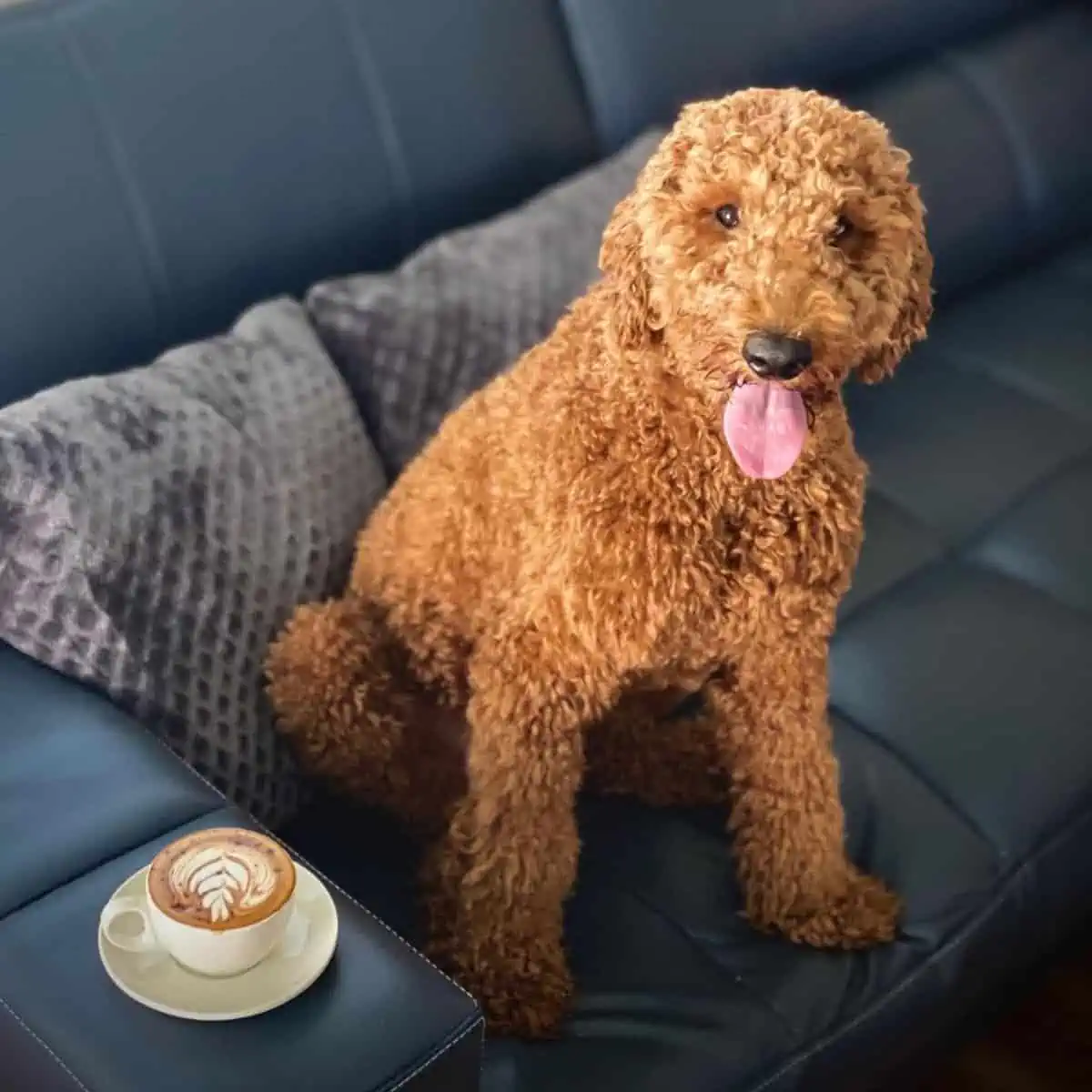
Still, there’s typically no reason to panic if you notice your red Goldendoodle’s fur becoming darker or lighter.
Do Goldendoodle Dogs Have a Variety of Fur Colors?
Despite the name of this hybrid breed, many Goldendoodles don’t always have shiny, golden fur. While some might have hair that’s identical to their Golden Retriever parent, many have curly locks that come in a wide variety of colors, including:
- Red
- Brown
- Yellow
- Black
- White
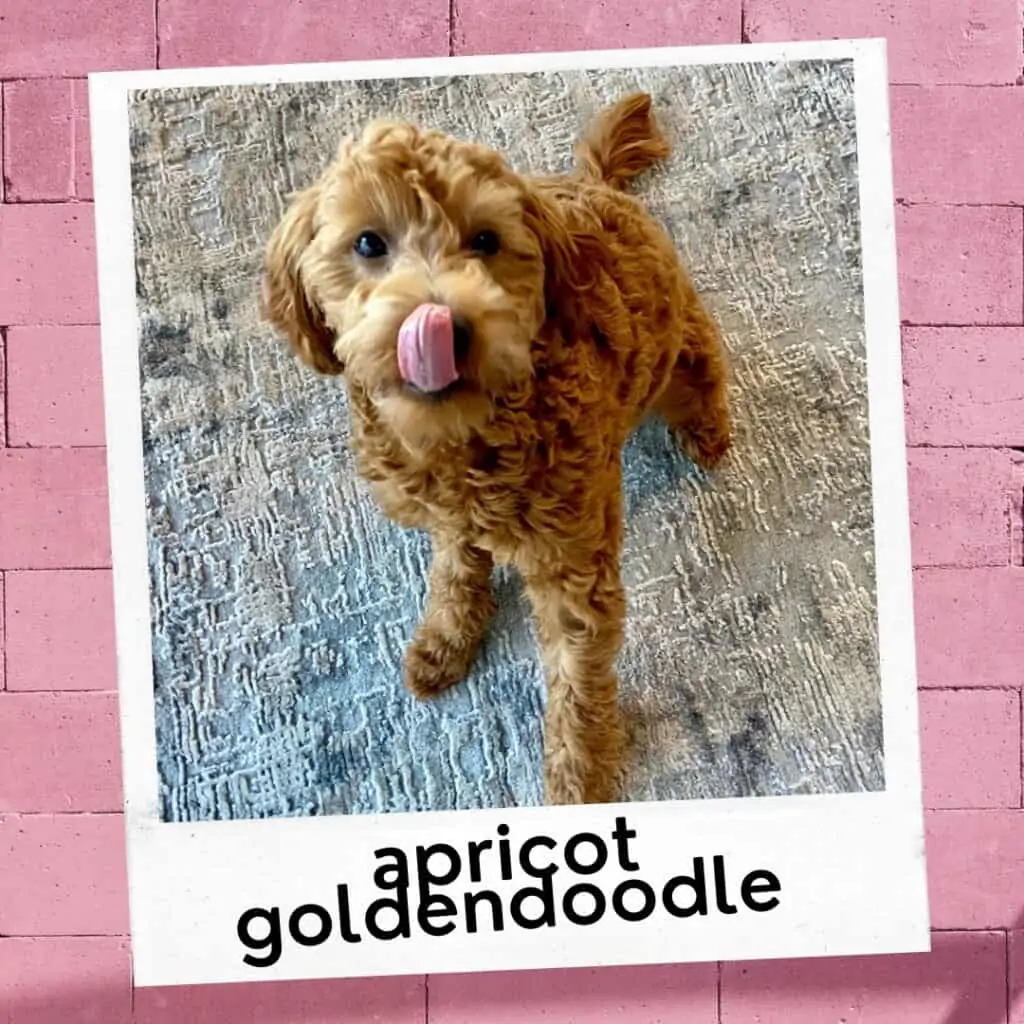
See the full list of Goldendoodle coat colors (with photos) including rare Merle or Parti coats in our guide.
In some cases, your Goldendoodle pup might have a combination of fur colors! This differentiation in fur colors is all thanks to the Goldendoodle’s Poodle genetics. While Golden Retrievers tend to have yellow, gold, or light-brown fur, Poodles come in a far greater range of hues.
Consequently, it’s often the Poodle parent’s genetics that influences the pups’ final fur colors. Blonde and red colors are often genetically recessive, which is something to keep in mind. Breeders hoping to produce light-colored Goldendoodles will want to breed a Golden Retriever with a blonde, white, or light-brown Poodle.
Additionally, a dog’s adult coat is sometimes a different color than their puppy fur. This means that you could adopt a red Goldendoodle puppy that grows up to become a brown or blonde Goldendoodle dog.
Why Do Red Goldendoodles Change Color?
Though there are several hairless dog breeds worldwide, most pups are born with a thin, soft coat of fur covering their bodies. The only places that aren’t covered in hair are the pads of the feet, the nose, and the genitals.
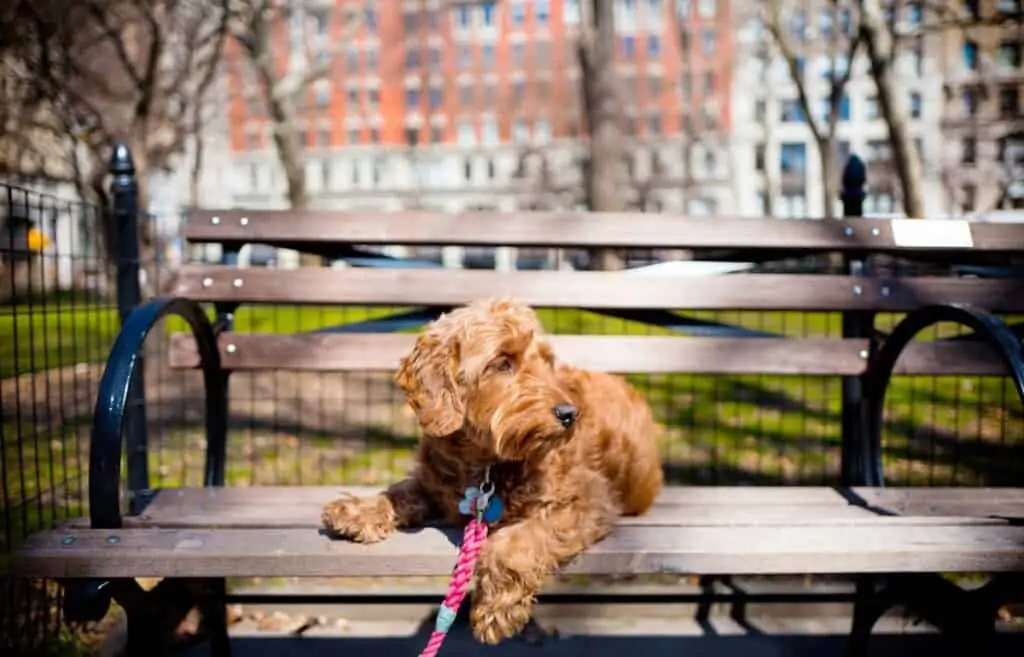
This downy covering of fur helps keep small puppies warm, especially while their mother is away or hunting for food. As puppies grow older, a thicker coat of hair replaces the softer, downy one. This helps the young dogs gain some autonomy, as they no longer need to rely on their mother or littermates for warmth.
The adult coat is often a different color than the puppy one, which may help other dogs identify between juveniles and adults. However, on a biological level, this change in color stems from an increased or decreased production of melanin.
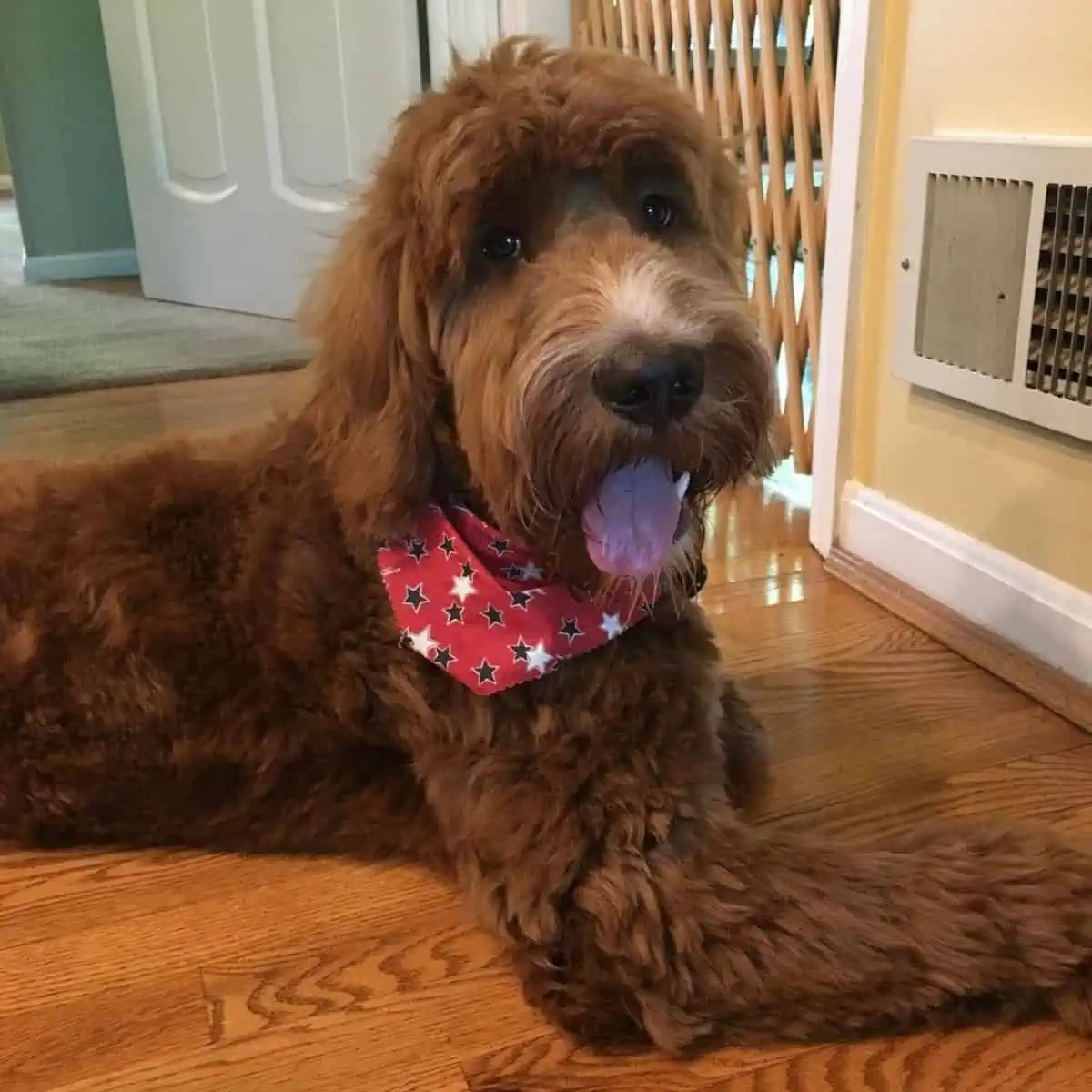
Generally, most dogs will lose their final remnants of puppy fur at six months. Still, precise timing varies from species to species. It’s challenging to determine an exact age when Goldendoodles lose their baby fur, as they’re a combination of two well-known breeds.
As a result, puppies can exhibit a wide range of physical and mental characteristics, including fur color, shape, and length.
A Unique Genetic Combination
Why do red Goldendoodles change color? To put it plainly, Goldendoodle dogs change color because they’re descended from Poodles, and Poodles come in a wide range of colors.
Hair and fur color are the result of several different genes, often called phenotypic genes. These bits of genetic information control things like skin color, eye color, and hair color. Each Goldendoodle puppy inherits a mixed bag of genes from its parents.
Some Goldendoodle puppies look like curly-haired Golden Retrievers. Others look like golden, wide-faced Poodles. For many, the ideal Goldendoodle is one that exhibits an even blend of their parent’s features. This perfect genetic combination rarely happens, especially from the first generation of Golden Retriever/Poodle hybrids.
To attain the most attractive-looking Goldendoodle puppies, most breeders will selectively breed second or third-generation dogs that best exemplify the desired traits. As the genetic variation among these true Goldendoodle dogs grows smaller and smaller, their breed traits and physical characteristics become more evident.
But with every passing generation, there’s a greater chance of offspring with mutations. Because Poodles and Golden Retrievers are rarely ever red, a red Goldendoodle is likely the result of a mutated gene controlling the phenotype for fur color. If this harmless mutation occurs repetitiously, you can breed the resulting red-furred offspring to create true red Goldendoodles.
Can I Find a True Red Goldendoodle?
It is possible that your red Goldendoodle will remain red all their lives, but this is rare. True red Goldendoodles are either the offspring of two true red Goldendoodle parents or naturally occurring mutants.
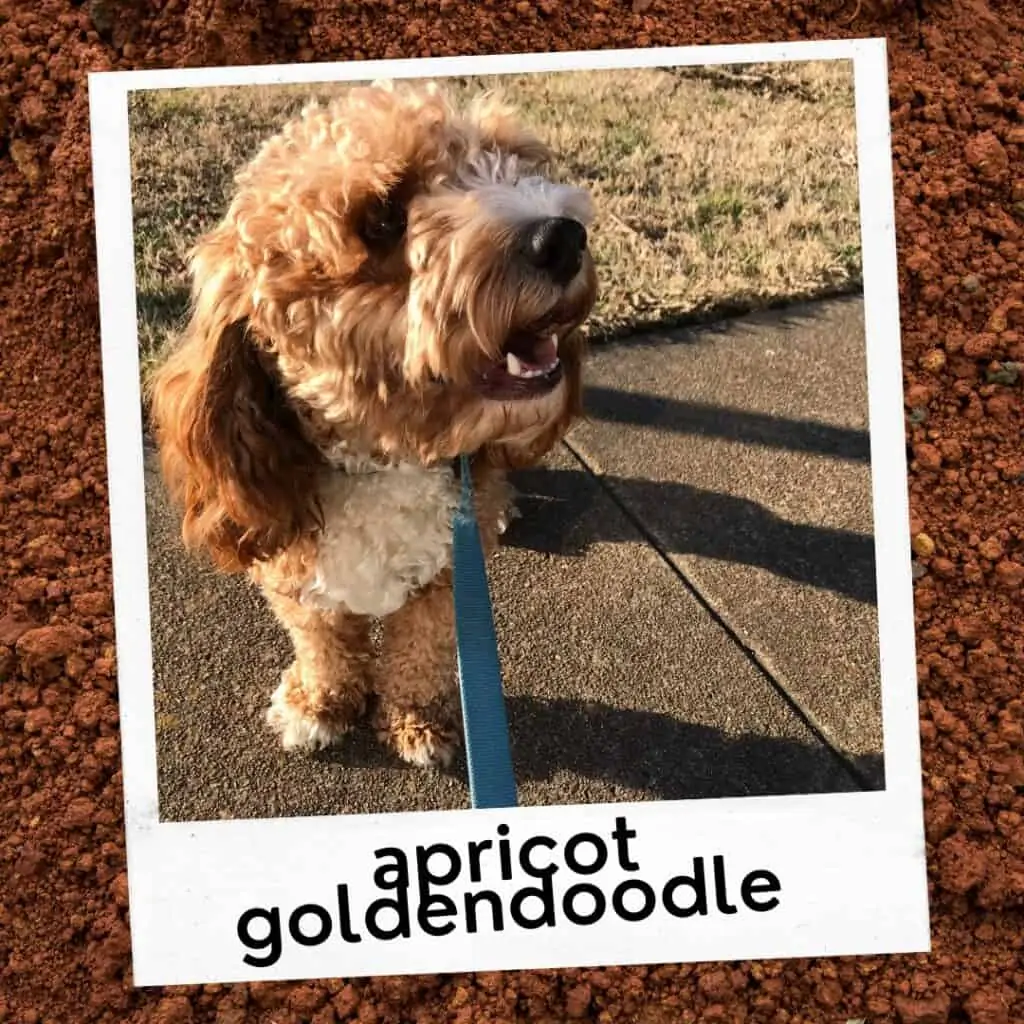
Because red fur coloration tends to be recessive, the odds of a naturally occurring red Goldendoodle are extremely low. To make a brood of true red Goldendoodles, you’d need the good fortune to find two naturally occurring red Goldendoodles that are intact and off the opposite sex.
If you’re adopting a red Goldendoodle from a breeder, you’ll want to ask the breeder about the pup’s parents. If the breeder confirms that the parents are a Golden Retriever and Poodle, your red dog will likely have a different fur color as an adult.

However, if the breeder provides proof that both parents are naturally occurring red Goldendoodles, you might have a true red Goldendoodle on your hands! Still, be sure to verify that the breeder is reputable. It’s not uncommon for unscrupulous dog breeders to falsify information in order to sell more puppies.
One of the best ways to avoid scams or bad breeders is to reference the American Kennel Club (AKC) Marketplace. The puppies listed here are only from certified breeders that register their pup’s genealogy, condition, and identifying information with the AKC. To find the best possible breeder, try searching for Golden Retriever or Poodle breeders. After all, hybrid breeds like the Goldendoodle aren’t officially accepted by the AKC.
How Can I Make My Goldendoodle’s Fur Red Again?
There’s virtually no way to make your Goldendoodle’s fur red again. While it’s possible to purchase pet-safe hair dyes, coloring your dog’s fur can be a costly and time-consuming experience.
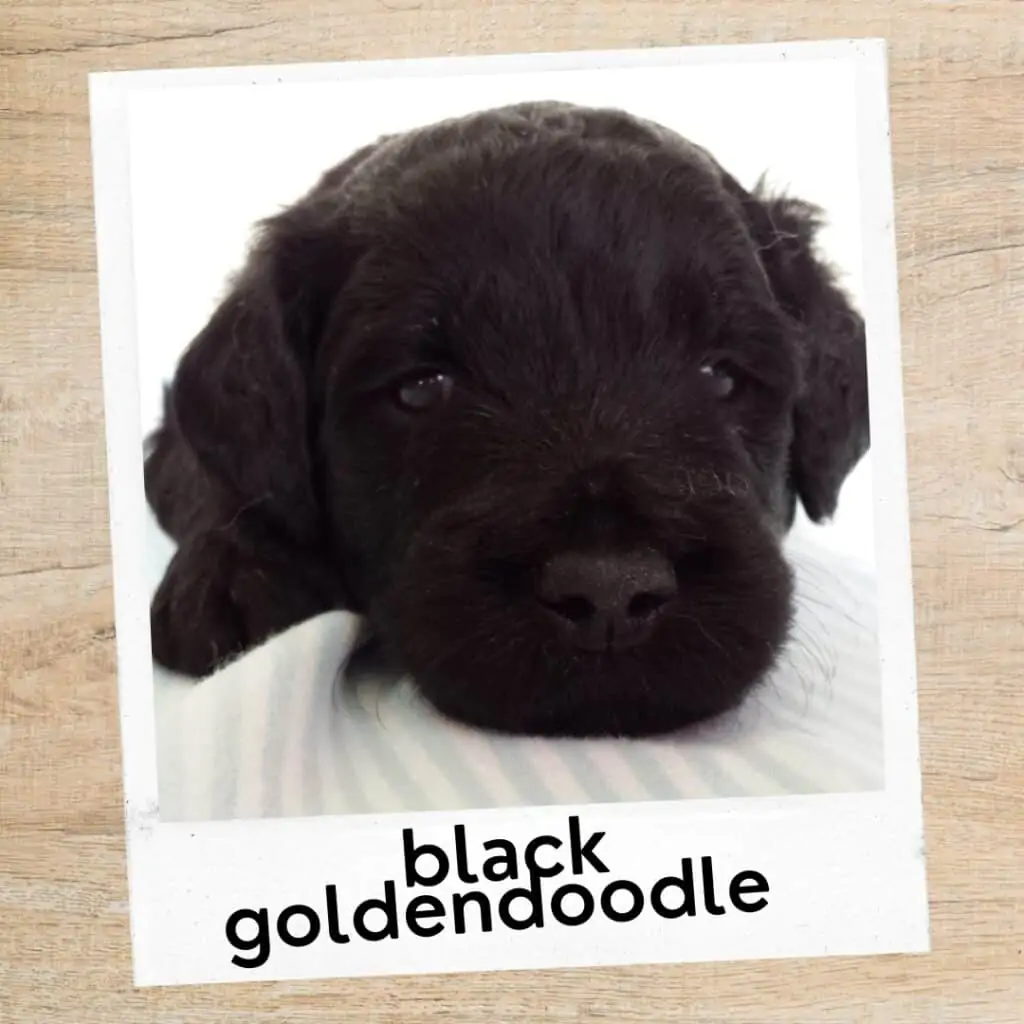
Additionally, it’s crucial that pet parents love their animals just the way they are. Attempting to change your dog’s looks just because you prefer a different color will likely leave you resenting your pup.
If you can’t stand to own a Goldendoodle that isn’t red, you’ll want to avoid adopting a puppy. The fur on an adult Goldendoodle won’t change color over time, so it might be a better idea to simply search for a red adult.
Final Red Goldendoodle Color Change Thoughts
If you have a red Goldendoodle puppy, you might not end up with a red Goldendoodle dog. That’s because a puppy’s fur color tends to change as it gets older. Not only does it often grow thicker and heavier, but it can also change color. Additionally, red fur tends to be a recessive gene.
The odds of owning a true red Goldendoodle are exceptionally low, though not impossible. Still, pet parents should refrain from feeling too upset if their Goldendoodle dog’s fur turns brown, gold, or black. These are natural colors that Goldendoodle puppies inherit from their Poodle parent.